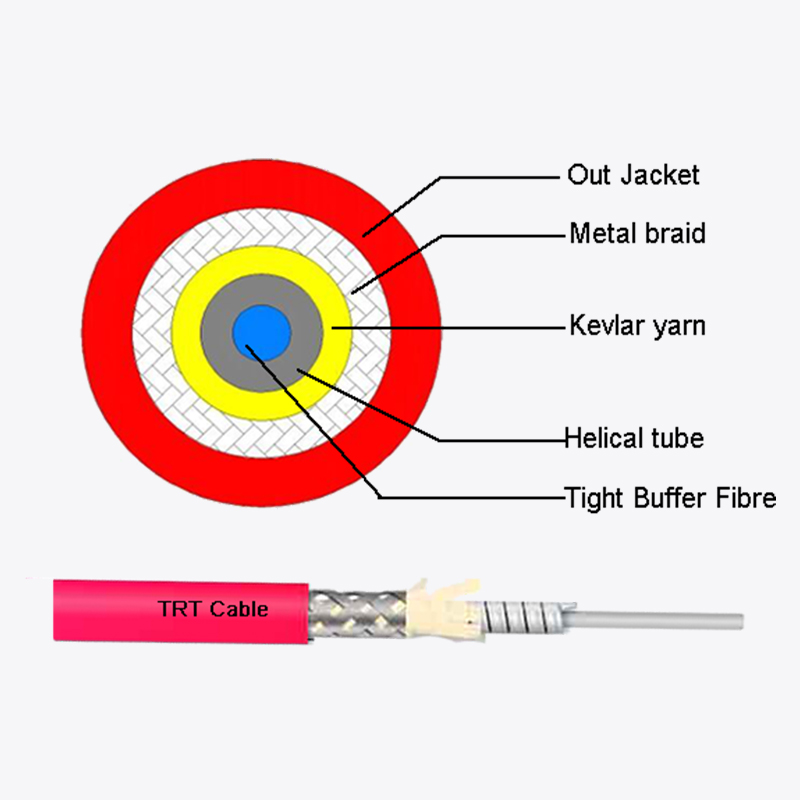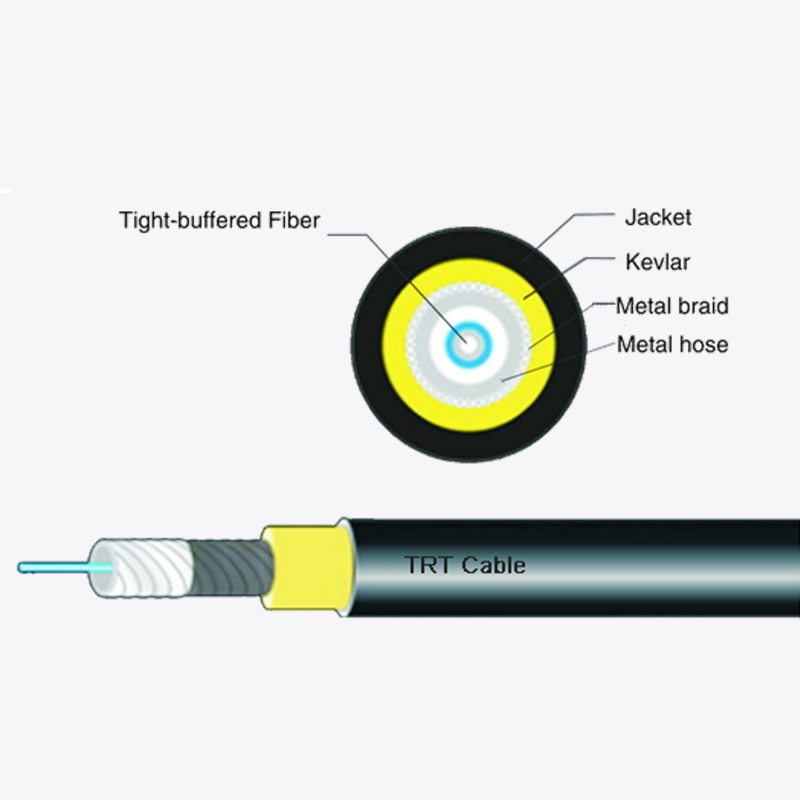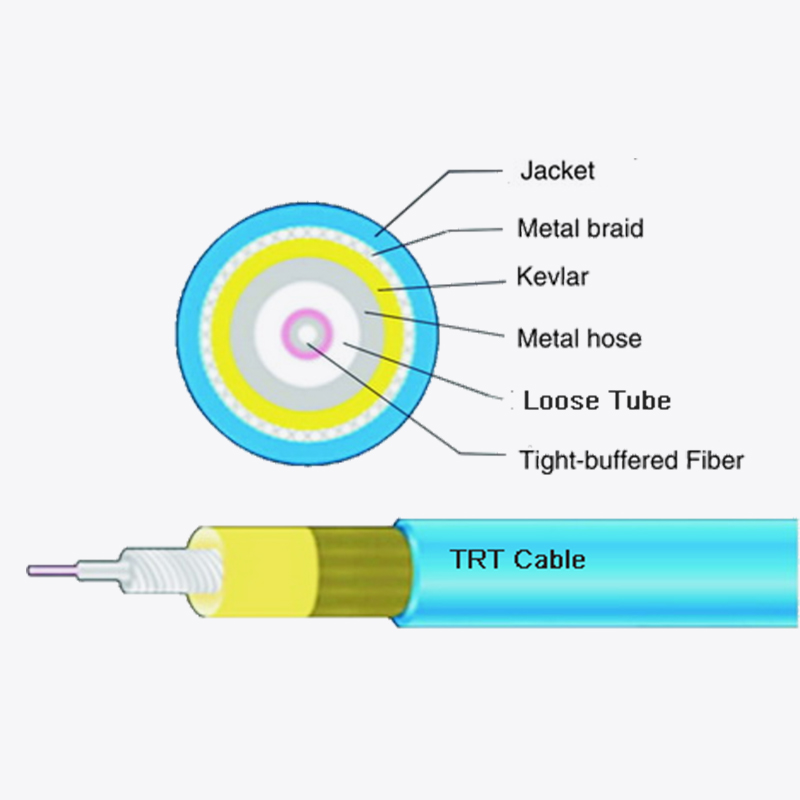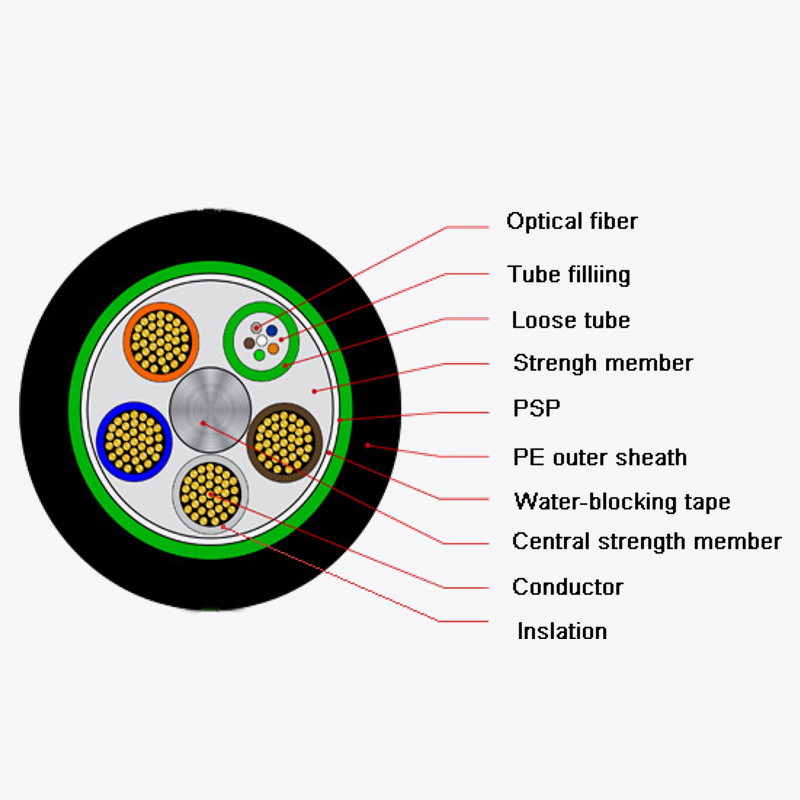Web Menu
Product Search
Exit Menu
What are the key differences between single-mode and multi-mode Multi-Purpose Distribution Cable?

What are the key differences between single-mode and multi-mode Multi-Purpose Distribution Cable?
Multi-purpose distribution cable is a critical component in modern telecommunication and data transmission networks. Choosing the right type of cable significantly impacts performance, installation flexibility, and long-term reliability. Among the most common distinctions, single-mode and multi-mode Multi-Purpose Distribution Cable are widely used across various industries.
Overview of Multi-Purpose Distribution Cable
Multi-purpose distribution cable serves as a versatile medium for transmitting data, voice, and signals in a variety of applications. These cables are designed to accommodate multiple functions, including interconnecting devices, distributing signals in commercial buildings, and supporting complex networking infrastructures. The primary advantage of multi-purpose distribution cable is its adaptability for indoor, outdoor, and hybrid deployments, making it a cost-effective solution for diverse installation scenarios.
Multi-purpose distribution cable generally consists of conductive cores, protective jackets, and optional shielding. Variations such as single-mode and multi-mode versions are tailored to meet specific network requirements, including distance, bandwidth, and environmental conditions. By evaluating these differences, businesses can optimize their infrastructure for performance and durability.
Understanding Single-Mode Multi-Purpose Distribution Cable
Single-mode Multi-Purpose Distribution Cable is characterized by a small core diameter, typically designed for long-distance data transmission. The cable allows only a single light path to propagate, minimizing dispersion and signal loss. This design makes it particularly suitable for telecommunications, metropolitan area networks (MANs), and high-speed backbone connections.
Key Characteristics
Long-distance transmission is the primary advantage of single-mode cable. Because light travels in a single path, it experiences fewer reflections and maintains signal integrity over extended lengths. This makes it ideal for large-scale networks where data must traverse multiple floors, buildings, or even cities.
Another important aspect is the high bandwidth capability. Single-mode multi-purpose distribution cable supports data rates that are far higher than multi-mode alternatives, allowing for future-proof infrastructure investments. This is particularly important for enterprises that anticipate network expansion or upgrades over time.
The cable’s core size, typically around 8–10 microns, reduces modal dispersion, which in turn enhances signal clarity. Single-mode cables also tend to have stricter installation requirements because their smaller core is more sensitive to bending and connector alignment. Proper handling and installation are critical to maintain performance.
Understanding Multi-Mode Multi-Purpose Distribution Cable
Multi-mode Multi-Purpose Distribution Cable, in contrast, has a larger core diameter, allowing multiple light paths to propagate simultaneously. This design is well-suited for shorter distances, such as within buildings or on campuses. Multi-mode cables are commonly used for local area networks (LANs), data centers, and enterprise networks.
Key Characteristics
The ease of installation is a notable benefit of multi-mode cable. Its larger core reduces the precision required for connectors and terminations, making it more forgiving during deployment. Multi-mode multi-purpose distribution cable is often more cost-effective for short-distance applications due to lower equipment costs and simpler installation procedures.
Multi-mode cables have shorter maximum transmission distances compared to single-mode cables because multiple light paths can cause modal dispersion. This can result in signal degradation if the cable is used over extended distances. However, for typical enterprise networks where distances rarely exceed 500 meters, multi-mode cable provides adequate performance and reliability.
The cable’s ability to support multiple wavelengths also makes it suitable for high-density network environments, such as server rooms and telecommunication closets. Multi-mode multi-purpose distribution cable is compatible with various transmission equipment and can be easily integrated into existing infrastructure.
Comparison Table: Single-Mode vs Multi-Mode Multi-Purpose Distribution Cable
| Feature | Single-Mode Multi-Purpose Distribution Cable | Multi-Mode Multi-Purpose Distribution Cable |
|---|---|---|
| Core Diameter | Small (8–10 microns) | Large (50–62.5 microns) |
| Transmission Distance | Long-distance | Short-distance |
| Bandwidth Capacity | High | Moderate |
| Installation Complexity | Higher (requires precision) | Lower (forgiving during installation) |
| Typical Applications | Telecommunication, MANs, backbone networks | LANs, data centers, enterprise networks |
| Equipment Cost | Higher | Lower |
| Modal Dispersion | Minimal | Present |
This table summarizes the essential differences that buyers, installers, and engineers must consider when selecting multi-purpose distribution cable for specific applications.
Factors Affecting the Choice of Multi-Purpose Distribution Cable
When selecting between single-mode and multi-mode Multi-Purpose Distribution Cable, several factors should be evaluated:
Distance and Network Layout: Single-mode cable is preferred for long-distance links, while multi-mode is suitable for short-range connections within buildings or campuses. Understanding the network topology is critical for making the right decision.
Data Rate Requirements: High-speed networks or applications requiring future scalability may benefit from single-mode cable, which supports higher bandwidth over longer distances. Multi-mode cable is effective for moderate-speed applications where cost-efficiency is a priority.
Installation Environment: Environmental factors such as temperature, humidity, and exposure to UV light can influence cable choice. Multi-purpose distribution cable with enhanced jacket materials may be necessary for outdoor or industrial installations, regardless of mode.
Cost Considerations: While single-mode cable offers superior performance, it generally comes with higher material and equipment costs. Multi-mode cable may provide a more affordable solution for networks that do not require long-distance transmission.
Maintenance and Future Upgrades: Single-mode multi-purpose distribution cable provides a longer lifespan and accommodates higher data rates for future upgrades. Multi-mode cable offers flexibility and ease of maintenance, particularly for networks with frequent modifications.
Practical Applications
Single-Mode Multi-Purpose Distribution Cable Applications
Single-mode cable is commonly deployed in scenarios where signal integrity over distance is critical. Examples include:
- Inter-building communication in large corporate campuses
- Telecommunications and fiber-to-the-home (FTTH) networks
- High-speed data backbones connecting data centers
Its ability to maintain low signal loss over long distances makes single-mode multi-purpose distribution cable the preferred choice for critical infrastructure projects.
Multi-Mode Multi-Purpose Distribution Cable Applications
Multi-mode cable is often used in environments where installation efficiency and cost are priorities. Applications include:
- Internal office network cabling for computers and servers
- Data centers requiring short-range high-density connections
- Campus networks linking multiple buildings within a small area
Multi-mode multi-purpose distribution cable provides sufficient performance while reducing installation complexity and costs.
Installation Considerations
Proper installation of multi-purpose distribution cable is essential to ensure long-term performance. Key considerations include:
Bending Radius: Exceeding the recommended bend radius can cause attenuation and signal loss, particularly for single-mode cable.
Connector Alignment: Precision is critical for single-mode cable terminations, while multi-mode cable allows some tolerance for connector misalignment.
Environmental Protection: Both single-mode and multi-mode multi-purpose distribution cable may require protective conduits or jackets for outdoor or industrial applications.
Testing and Verification: After installation, optical testing or signal verification ensures that the cable meets performance standards.
Industry Trends and Developments
The demand for multi-purpose distribution cable continues to grow, driven by data center expansion, 5G deployment, and smart building networks. Emerging trends include:
- Adoption of low-loss materials for improved signal integrity
- Integration of multi-purpose distribution cable into high-density patch panels
- Emphasis on sustainable and recyclable cable materials
- Enhanced fire-resistant and UV-protected jackets for safety and durability
Manufacturers and buyers increasingly focus on solutions that balance performance, cost-efficiency, and environmental responsibility, making multi-purpose distribution cable a versatile choice for modern infrastructure.
Conclusion
Choosing between single-mode and multi-mode Multi-Purpose Distribution Cable requires careful evaluation of distance, data rates, installation conditions, and budget. Single-mode cable excels in long-distance, high-speed applications, while multi-mode cable is ideal for shorter distances and cost-sensitive deployments.
Understanding these distinctions allows businesses, engineers, and installers to design networks that maximize performance, minimize downtime, and accommodate future growth. By selecting the appropriate multi-purpose distribution cable, organizations can ensure reliable and scalable network infrastructure for years to come.
 Address:Zhong'an Road, Puzhuang Town, Suzhou City, Jiangsu Prov., China
Address:Zhong'an Road, Puzhuang Town, Suzhou City, Jiangsu Prov., China Phone:+86-189 1350 1815
Phone:+86-189 1350 1815 Tel:+86-512-66392923
Tel:+86-512-66392923 Fax:+86-512-66383830
Fax:+86-512-66383830 Email:[email protected]
Email:[email protected] Wechat: xiaobin18913501815
Wechat: xiaobin18913501815 whatsapp: +86 18913501815
whatsapp: +86 18913501815
 0
0

 English
English русский
русский Español
Español Português
Português عربى
عربى



